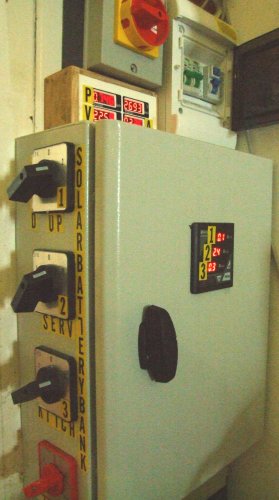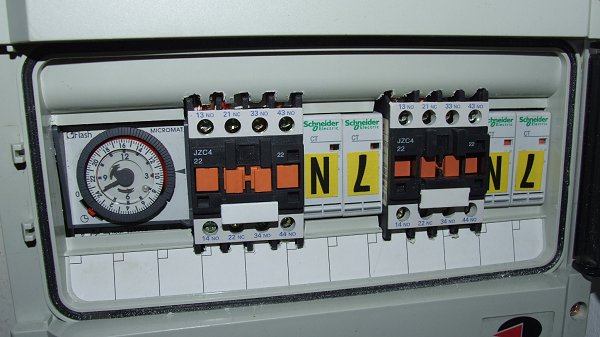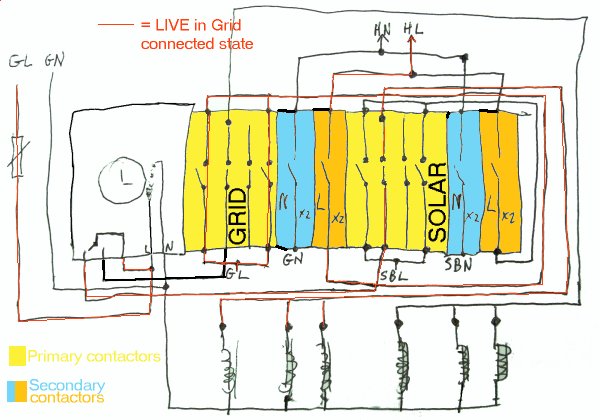While the PJ might synchronise, after it causing spikes on switching in the barn and blowing out LED floodlights, I haven't trusted it and in the interests of avoiding big bangs, inserting a break of a cycle or so doesn't seem to be a bad idea . . .
I kept the Neutral unearthed to avoid earth currents especially in the event of lightning as the barn is over 150 metres from the house. I'm using 5x 10mm SWA cable and from memory using 3 cores for live and 2 cores for neutral together with the external armour to beef up the neutral. It works well giving less than 10 volts drop on a 3kW load. In view of the possibility of damage to the outer insulation neutral may well become earthed and it's then that earth current complications could happen.
This is my manual switch box

There's an ammeter monitoring the current on all three circuits switchable between solar and grid, so that if there is a particularly heavy draw I can switch back to grid, and the bottom red switch is for lights.
I've simply taken various circuits from the house and routed them through the changeover switch system.
Another of the reasons for not relying on the PJ syncing and instead giving full double pole and time delayed switching is that from the grid not all circuits are on the same phase. Whilst there are warning labels inside the box it would probably be appropriate to put more exciting labelling on the outside of the box and to make use of the lock . . .
This is the automatic box showing the type of contactors

I tried a further sequential delay putting the 2nd grid contactor energised by live from the live output of the primary contactor and the neutral of the energising coil to the output of the secondary neutral so that live would not be connected until after neutral was connected but this, however caused the earth leakage breaker to blow feeding from the solar supply.

Looking at the circuit as implemented I see that I wired the energisation of the secondary contactors with the primary contactors on account of the two systems having two different neutrals. Where Neutral was common, then the secondary contactors could be activated from the Live appearing at the switched side of the primary contactors.
In this arrangement there is less of a delay but any chance of different phases meeting has a double-barreled protection.
The delay here is only the deactivation time of the turning off contactor followed as the NC connection is restored by the activation time of the turning on time of the slowest of the three contactors.
Best wishes
OTW